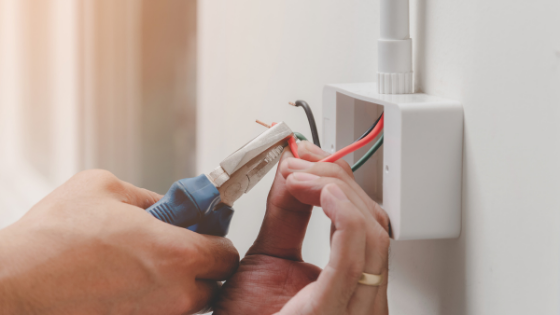An electrical circuit is made up of wiring, a breaker, outlets, and various devices that plug into the outlets, such as light fixtures, appliances, and electronic devices. The amount of electricity used by each device adds to the total load on the circuit. Plugging in too many devices can exceed the load capacity of a circuit and cause the breaker to trip, which shuts off power to the entire circuit.
Without a circuit breaker, an overload would cause the wiring to overheat and melt, leading to an electrical fire. Circuits in the home have different levels of load capacity, allowing some circuits to power large appliances like refrigerators and washing machines.
Signs of an Overloaded Circuit
One clear sign of an overloaded circuit is a tripped breaker that shuts off power to all devices on the circuit. Other signs include:
- Buzzing outlets or switches
- Scorched plugs or outlets
- Burning odors coming from outlets or switches
- Dimming lights
- Outlet or switch covers that are warm to the touch
- Appliances, power tools, or electronics that don’t seem to receive enough power when plugged in
Burning smells, buzzing sounds, and unusually warm devices can also indicate loose connections or short circuits. It’s important to contact an electrician to address any of these concerns.
How to Map Circuits
To prevent circuit overload, the first step is to find out which outlets form a circuit. For example, if turning on the toaster causes the kitchen lights to dim, then that means kitchen lighting and the outlet powering the toaster are on the same circuit. Mapping the circuits will tell you how many devices you can power at the same time on one circuit and also help determine how many more circuits are necessary to meet household demand for electricity.
To map the circuits, begin by turning off one of the breakers labeled with the number 15 or 20. Then, walk through the home to see which devices or appliances don’t have power. You could also use a voltage tester or receptacle tester. In some cases, the breakers may have labels indicating the circuit area. After noting the circuit area, go back to the panel and turn on the breaker. Turn off the next one in the row and repeat the test for all “15” and “20” circuits.
If you have any questions about mapping circuits or preventing overload, contact Tucker Hill today!

